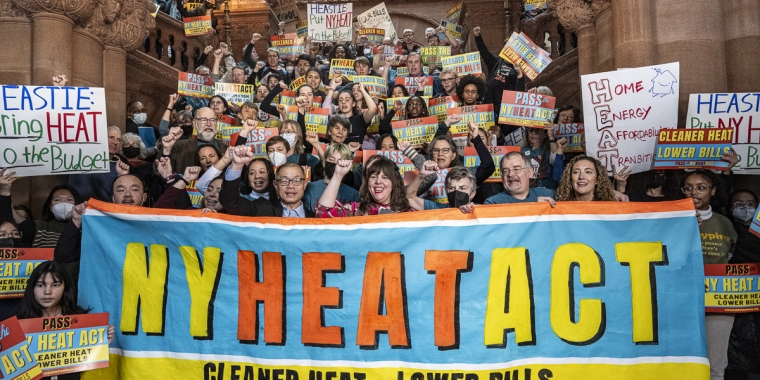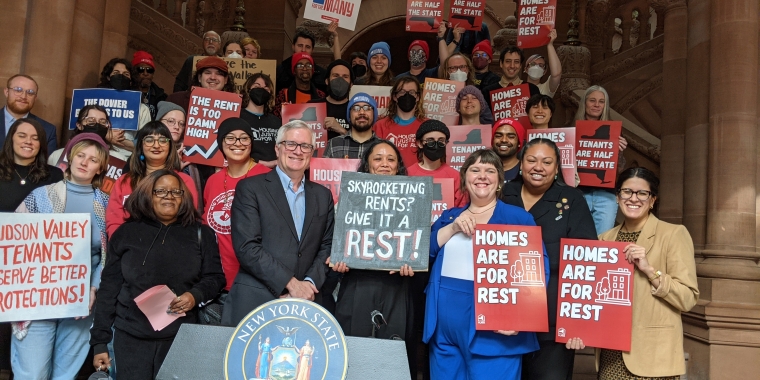
Biometric Update: Face Biometrics Use in US Schools, Policing, Airports and Public Housing Faces Legal Challenges and Questions

On June 24, 2020, Biometric Update published a story by Chris Burt about the lawsuit filed by the NYCLU against the Lockport City School District for their use of facial recognition software. The article covers Senator Kavanagh's and Assemblymember Monica Wallace's opposition to this use of facial recognition technology in schools. The full text of this story is below; the original version is available via the link above.
_______________
Face Biometrics Use in U.S. Schools, Policing, Airports and Public Housing Faces Legal Challenges and Questions
By Chris Burt
June 24, 2020
A lawsuit over the use of biometric facial recognition in schools has been filed by the New York Civil Liberties Union against Lockport City School District, alleging its AEGIS system violates student data protection laws, NPR affiliate WBFO reports.
District director of technology, data security and communications Dr. Robert LiPuma says AEGIS uses facial recognition in a very specific form and for a specific purpose. Plaintiffs in the lawsuit, who are parents of children in the district, allege the technology is racist, and that it will not make children safer.
The system was launched earlier this year after it received approval from the New York State Education Department (NYSED).
New York State Senator Brian Kavanagh and Assemblymember Monica Wallace issued a joint statement supporting the lawsuit.
“The lawsuit recently filed by the New York Civil Liberties Union against the New York State Education Department for permitting the use of facial recognition technology in the Lockport City School District illustrates, yet again, why it is urgent for NYSED to alter its course on this issue. We have proposed legislation to impose a moratorium on the use of facial recognition technology in schools, but NYSED and school districts themselves have the authority to take that step now, without waiting for either the Legislature or the Courts to require that,” the lawmakers write.
“We are concerned that this technology could be used in ways that violate the privacy and civil rights of students, staff, and visitors; that it is an ineffective form of school security; and that student data may not be stored securely.”
They also express concerns about facial recognition’s accuracy, particularly for different demographics, as well as the cost of the system in a time of budget pressure.
Questions about the propriety of biometrics use in schools are only growing more pressing, as the technology continues to spread. Sherman Independent School District in Texas are deploying fingerprint scanners to check students entering and exiting busses and to associate students with their accounts for lunch purchases. The goal is to increase the security and speed of the processes, according to the Herald Democrat.
The district has invested $127,000 to install the technology, and plans to spend around $60,000 in services and fees. In the future, the district says the use of the technology is likely to expand.
Wrongful arrest allegedly based on misused facial recognition
The ACLU of Michigan has filed a complaint with Detroit police alleging the first-ever wrongful arrest of a person in the U.S. based on a false facial recognition match.
Thomson Reuters reports that Robert Williams, who is Black, spent more than a day in custody after being arrested in front of his two children, but was released after police told him “the computer” must have been mistaken. The civil rights organization has asked Detroit police to stop using the technology.
The ACLU says facial recognition technology provided to Michigan state police by Rank One Computing identified a man as a possible match to video footage of a shoplifting incident based on his driver’s license photo. The group claims based on this “that the technology is flawed and that and that investigators are not competent in making use of such technology.”
NIST testing on demographic differences in facial recognition showed that top-quality algorithms produce nearly undetectable differentials in false positives, though the institute’s Biometric Standards and Testing Lead Patrick Grother acknowledged to Biometric Update that the results were misunderstood by some in the media and the privacy community.
An attorney from the ACLU of Northern California told Reuters that Rank One should take responsibility for the police’s error, “even if Rank One performs well.”
Both Rank One and Michigan state police have guidelines stating facial recognition cannot be used as the sole basis for an arrest, but it is unclear what if any additional evidence the police used in deciding to arrest Williams.
“The reported use of face recognition in the Williams case goes against established best practices for forensic face recognition,” Rank One Computing Co-founder and CEO Brendan F. Klare, Ph.D. told Biometric Update in an email. “Rank One unreservedly opposes any misuse of face recognition technology including where a candidate match serves as a lone source of probable cause for arrest. Moving forward, we will add legal means to prevent uses of our software which violate our Code of Ethics. We will also be conducting a technological review of what additional safeguards we can put in our software to thwart any misuse.”
Unlike DNA and fingerprint biometrics, facial recognition is not admissible as evidence in a court of law.
An expected extension of a facial recognition contract between Detroit police and DataWorks for the city’s Project Green Light was put on hold earlier this month due to protests.
The differences in biometric performance between facial recognition systems analyzing people with light and dark skin have been cited by the technology’s critics and by tech giants withdrawing their facial recognition from the law enforcement market.
Hawaii airport facial recognition challenged
The ACLU of Hawaii meanwhile expressed concern about the privacy and civil rights implications of the use of facial recognition in state airports as part of a system now in testing for screening the health of travellers, according to Hawaii Public Radio.
The letter alleges that the test fails to meet the Constitutional requirement that privacy intrusions are carried out as a narrow means to addressing “a compelling government interest.” While it recognizes the need to combat COVID-19, the organization notes that the Centers for Disease Control (CDC) have warned that temperature screening is not effective.
The ACLU also says the state has not disclosed enough information about the project, such as what data is collected, how it will be used, and how long it will be stored for.
The state Department of Transportation told Hawaii Public Radio in an email that the five companies participating in the test are Infrared Cameras, NEC, FLIR, iOmniscient and Omnisense, the first two in a joint solution. The FLIR system does not use facial recognition.
The test is scheduled for completion at the end of this week, and Hawaii’s Department of Transportation says that a week later it will have a decision on which supplier to go with. The government has budgeted $36 million for hardware and infrastructure, ABC affiliate KITV reports.
The department says the use of facial recognition allows automated solutions to be used, potentially saving millions in cost, while still enabling those who are detected to have a temperature to be identified and pulled aside. Data is not shared with third parties, and is deleted within about 30 minutes.
Public housing use unknown
The Department of Housing and Urban Development has admitted that it does not have policies around facial recognition in public housing, and therefore does not know how many programs use the technology, or how they do so, CNET reports.
Senator Ron Wyden (D-OR) had asked the agency several questions around the use of face biometrics in public housing.
Public housing authorities are mandated to manage and oversee programs, according to the letter. The department also notes that while federal funds may be used to purchase surveillance cameras, facial recognition cannot be purchased with federal funding. In the future, the department plans to request that authorities inform it of any intention to use facial recognition.
The technology has been used in an affordable housing development in Manhattan’s Knickerbocker Village since 2014.
A ban on facial recognition in public housing was proposed in Congress last year.
“It’s obvious from this response that Housing and Urban Development has a lot of work to do to get a handle on whether facial recognition technology is being used on residents of public housing, who often have no choice in where they live or whether they will be subject to invasive surveillance,” said Wyden and Senator Corey Booker (D-NJ) in a joint statement. “HUD should conduct a thorough investigation into how many public housing authorities are using or are planning to use facial recognition and ban its use in public housing until there are ironclad assurances that it can be used without discriminating against Black, indigenous and other people of color.
# # #


